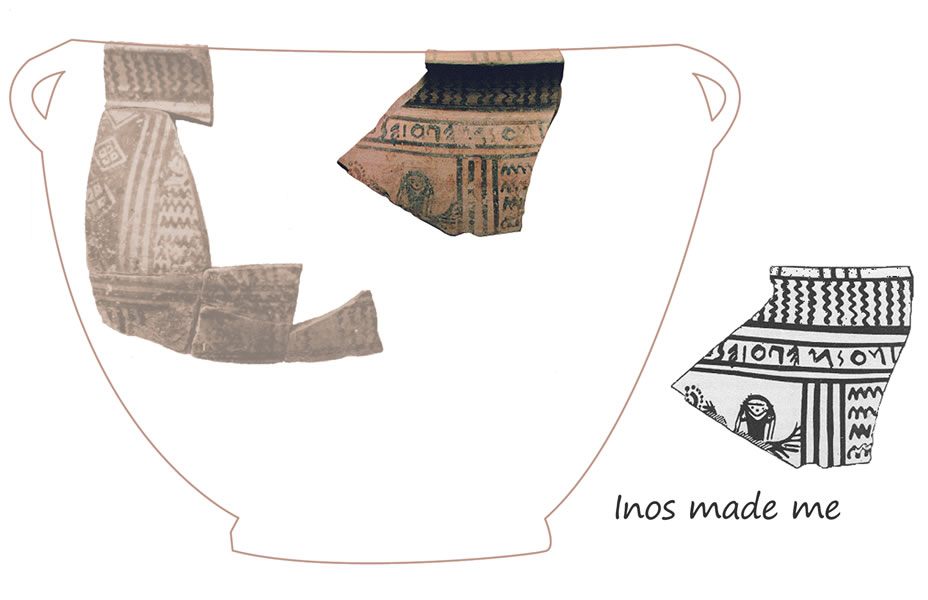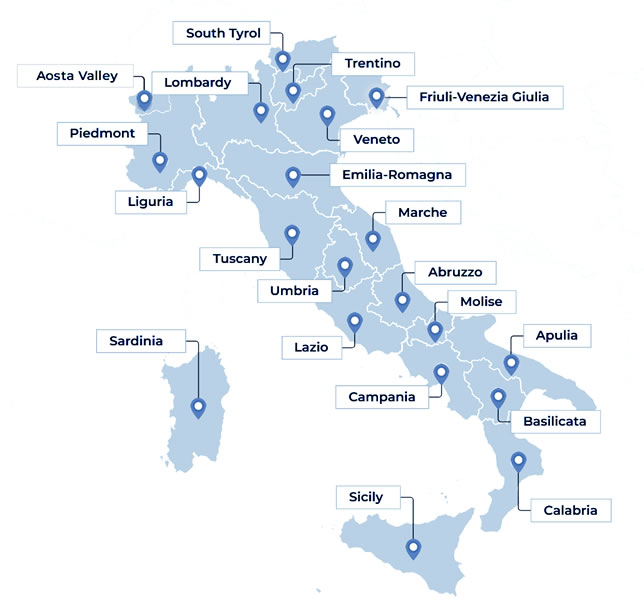

Explore Italy by place | region | time period
The Age of new people in Italy » Ischia (Napoli, Campania)
Already in 1000 BCE, the Greeks traded in the eastern Mediterranean. They established rest stops every time their trade grew. In most cases, a group of inhabitants settled permanently in the places occupied by the Greeks, giving rise to a new Hellenic community among the indigenous peoples. These settlements are called:
- emporiums (emporion), when they are only places of exchange without great demographic development, that is, landing places where imported goods were bartered for local products.
- colonies (apoikiai, namely second home), when transfer of population gives rise to a real city.
The Greek colonization of the Western Mediterranean began in the middle of the 8th century BCE when navigators sailed to the coast of Italy and founded some colonies. Later, many other Hellenic merchants and sailors, especially Dorians, arrived in Sicily and southern Italy. Magna Graecia was forming in Italy.
It must be said that Italy was not an unknown territory. Their Mycenaean ancestors (XVI-XV century BCE) landed along the Tyrrhenian coasts to provide raw materials and metals of Elba Island and Etruria in particular; Ischia island occupied an absolutely strategic position inside the Mediterranean shipping routes and became a crossroads of people and cultures (Greeks, Egyptians, Phoenicians) who exchanged their goods with local goods (clay, which was fundamental for the realization of pottery, and agricultural products).

Therefore Ischia was a emporium in the Mycenaean age while it became a colony during Greek age. Necropolis, fortifications, remains of buildings such as a temple and workshops for metalworking (the first quarter of the eighth century BCE) were discovered by the Italo-German archaeologist Giorgio Buchner in the area of San Montano (Lacco Ameno) and Monte di Vico between the years '50s and '80s.

The Greek tradition presents Cuma as the oldest Greek colony in Italy, and therefore as the first polis colonial in the West. But archaeological excavations have revealed - confirming Livius (59 BCE - 17 CE) - that a Greek colony was founded in the Gulf of Naples before Cuma (775-760 BCE) , in the island of Pithecusa (Ischia). Here navigators and merchants - both Phoenicians and Greeks - found a safer and more propitious place for their activity; and Pithecusa was for a time the only Greek colony in the gulf, until part of its inhabitants fifty years later moved to the mainland following civil strife (according to Strabo) and founded Cuma (725 BCE).

The Greeks (Eubei) who landed on the island and founded their first colony in Italy found an ideal place for their commercial activities:
- Sorgeto bay was a natural port sheltered from the mistral wind that hindered the landings;
- the soil was volcanic and therefore very fertile and more productive;
- there was so much clay, a useful wealth to produce vases and other ceramics;
- the island was at the right distance from the warlike populations of the mainland, who did not tolerate the exiles came from the sea.

In the eighth century CE, the Roman poet Publius Ovidius Naso (43 BCE - 17 or 18 CE) narrated the story of two brigands of the island of Euboea (Cercopes) were turned into apes by Zeus to mock the giants (Metamorphosis xiv. 90).
In Greek mythology, the Cercopes (kerkos, tail-men) were two brothers living upon the earth who practised every kind of knavery. They were so called (monkey-men) because of their cunning doings: one of them was named Passalus and the other Acmon. Their mother, a daughter of Memnon, seeing their tricks, told them to keep clear of Blackbottom, that is, of Heracles.
They once stole Heracles' weapons. He seized and punished them by tying them to a shoulder pole he slung over his shoulder with their faces pointing downwards, the only way they appear on Greek vases. Their mother, Theia, begged Heracles to let her sons go.
But after this misadventure, the Cercopes continued to live of brigandage, until the day when Zeus irritated, turned them into monkeys and transported them to Ischia and Procida. It seems that from this legend derives the name of the island Pithekoussai (pithekos monkey, monkeys island).
There is no evidence of the presence of these animals on the island. There is only a monkey depicted on a crater fragment. It is a large vase decorated by hand that bears the author’s signature (Inos made me). It was used to offer wine and water mixed according to the custom of the Greek symposium.

More likely was the interpretation of Pliny the Elder (23-79 CE), for which the name derived from pythos (vase) because here were factories of pots, amphorae, etc. on the island. Then Ischia was the vases island, theory supported by archaeological findings that testify to the Greek-Italic production of ceramics and in particular wine amphorae.
According to another hypothesis, the name described a feature of the island: it was rich in pine trees - pitueois (rich in pine trees), pituis (pine cone), pissa, pitta (resin) - so Pithekoussai meant resin island, an important substance also used to waterproof wine amphorae.
For the Phoenicians it was i-schra, black island.
The Romans called it Aenaria (from aenus, metals island) for the metallurgical workshops located on the east coast.
Instead, based on the archaeological discoveries of Giorgio Buchner and David Ridgway, Pithekoussai derives its name from the goldsmith workshops and their products (goldsmiths island).
In order to know more, you can visit:
- Wikipedia: [1]
This page was last edited on 8 June 2024

Open in Google Maps and find out what to visit in a place.
Go to: Abruzzo | Aosta Valley | Apulia | Basilicata | Calabria | Campania | Emilia Romagna | Friuli Venezia Giulia | Lazio | Liguria | Lombardy | Marche | Molise | Piedmont | Sardinia | Sicily | South Tyrol | Trentino | Tuscany | Umbria | Veneto

Text and images are available under the Creative Commons Attribution-ShareAlike License 4.0; - italystudynotes.eu - Privacy